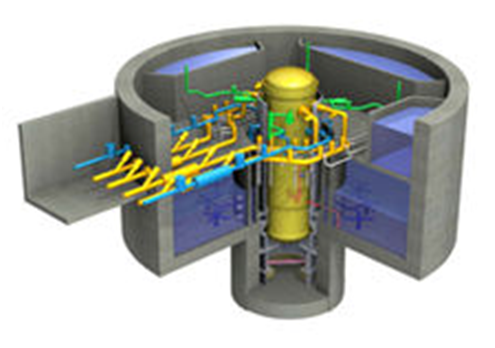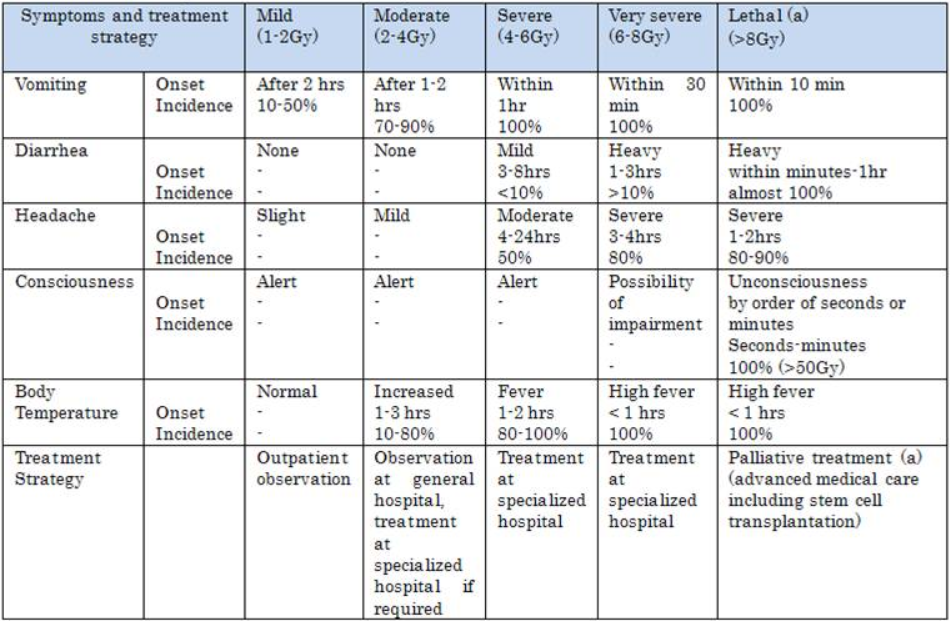
Blog
-
Geiger Readings for January 26, 2013
Ambient office = 59 nanosieverts per hourAmbient outside = 106 nanosieverts per hourSoil exposed to rain water = 116 nanosieverts per hourBaby Gold Potato from Top Foods = 84 nanosieverts per hourTap water = 80 nanosieverts per hourFiltered water = 76 nanosieverts per hour -
Geiger Readings for January 25, 2013
Ambient office = 130 nanosieverts per hourAmbient outside = 94 nanosieverts per hourSoil exposed to rain water = 89 nanosieverts per hourCippolina Onion from Top Foods = 96 nanosieverts per hourTap water = 87 nanosieverts per hourFiltered water = 78 nanosieverts per hourAlaskan Copper River Salmon = 93 nanosieverts per hour -
Nuclear Reactors 99 – General Electric Hitachi Settles Claim for Fraud
General Electric Hitachi Nuclear Energy (GEH) is a global alliance between General Electric in the United States and Hitachi in Japan. The company is a global provider of nuclear reactors and nuclear industry services. GEH is working on several different designs for advanced nuclear reactors.
GEH is in the process of having the design of its “Economically Simplified Boiling Water Reactor” (ESBWR) certified by the United States Nuclear Regulatory Commission. The NRC is also reviewing applications for construction and operation of ESBWR at Dominion’s North Anna power plant and Detroit Edison’s Fermi sites.
Final approval of the design and applications has been held up by a whistleblower’s lawsuit from a former employee of GEH, under the False Claims Act, that alleges that “GEH concealed knownAZAZAZAZAZAZ flaws in the analysis of steam dryers and had made false representations that it had analyzed the components in accordance with applicable standards and verified the accuracy of its modelling.” The whistleblower is entitled to part of any money recovered by the U.S. Department of Justice from the lawsuit.
Steam dryers are used to remove excess moisture from the steam created by the nuclear reactor before it is delivered to the turbines used to generated electricity. They are “non-safety critical components.” GEH issued a statement that their steam dryers were in use in reactors around the globe and that they had always worked properly and caused no problems.
The certification of the design has been held up for two years by the lawsuit. The design of the ESBWR had been given final approval in March of 2011 after a final safety evaluation. The NRC said that it had concluded that the ESBWR design was safe and technically acceptable after a six year review process. However, the lawsuit over the steam dryers interrupted the final stages of the review process. The NRC proceeded with a study of the steam dryer modelling methodology and further analyzes and reviews. The normal certification process will be resumed after a final safety evaluation report and review of the steam dryer problems is finished.
GEH has issued a statement explaining why it agreed to a 2.7 million dollar fine to resolve the lawsuit. “Even though GEH denies the allegations, we believe that resolution of this matter supports our continuing efforts to maintain and enhance a positive working relationship with the US government, and more specifically the Nuclear Regulatory Commission”. The U.S. Department of Justice also issued a statement in which they confirmed that there were only allegations of false claims and that there had been “no determination of liability.”
It is interesting to note that Mitsubishi Heavy Industries (MHI), another nuclear contractor, is involved in a lawsuit over the closed San Onofre nuclear power plant. South California Edison (SCE), the owners of the plant allege that MHI used a faulty modelling process to OK design changes to the new turbines that SCE had ordered from them. The turbines failed in two years. MHI is counter-suing the claiming that they warned SCE that the turbine design changes could cause problems. Since it can take years for some design problems to become apparent, it is absolutely critical that modelling used in the design of nuclear reactors be good as possible.
Cutaway diagram of a GE Hitachi ESBWR:
-
Radiation News Roundup January 24, 2013
-
Geiger Readings for January 24, 2013
Ambient office = 66 nanosieverts per hourAmbient outside = 63 nanosieverts per hourSoil exposed to rain water = 92 nanosieverts per hourBaby Gold Potato from Top Foods = 94 nanosieverts per hourTap water = 91 nanosieverts per hourFiltered water = 78 nanosieverts per hour -
Radiation and Health – 10 Symptoms of Radiation Poisoning
I have written several blog posts about the dangers of radiation exposure to human health. Today I thought that I would mention ten symptoms of radiation sickness or “acute radiation syndrome.” These symptoms are certainly unpleasant to consider or experience but in our increasingly nuclear world, it is important for the public to be aware of these symptoms. If you have these symptoms, without prompt medical treatment, you will probably die.
1) Nausea and vomiting. If a person is exposed to a large dose of radiation, they will experience disorientation and vomiting within an hour.
2) Bruising and wounds not healing. Blood clotting is dependent on clot-forming platelets in the blood. Radiation can reduce the number of clot-forming platelets which results in serious bruising. In addition, the healing of wounds which is dependent on clotting will be impaired.
3) Bleeding out of body orifices. When the blood clotting mechanism is damaged, you may also bleed from mouth, nose and/or anus.
4) Blood in stools and vomit. Radiation can damage the cells that line the stomach and the intestines. This leads to irritation of the stomach and intestines followed by blood leaking into stomach and intestines.
5) Radiation burns. The first sign of radiation induced burns is severe itching of the exposed skin followed by reddening, blistering, the appearance of open sores and skin sloughing off.
6) Loss of hair. Radiation exposure also damages the hair follicles. This may lead to the rapid loss of hair.
7) Headaches, weakness and fatigue. Radiation damages red blood cells leading to anemia. Blood pressure also drops from radiation exposure. The result of these effects can be headaches, a feeling of weakness, a lingering sense of fatigue and/or fainting.
8) Ulceration of the gastrointestinal track. Radiation exposure can cause ulcers to form all the way from the mouth through the stomach to the intestines. The visible manifestation of this will be sores on your lips and in your mouth.
9) Tremors and seizures. Prolonged exposure to intense radiation can cause severe damage to the central nervous system which can cause seizures. One effect of this damage could also be lack of ability to coordinate voluntary muscles resulting in tremors.
10) Fever and infections. Severe radiation exposure can destroy white blood cells and bone marrow. The loss of the cells that fight infections can result in opportunistic infections leading to serious fevers.
These symptoms might be the result of radiation exposure of one or a few people due to accidents in the handling, processing, transportation or storage of highly radioactive nuclear materials. In this case, the probability of prompt medical attention is high. On the other hand, if there is a major nuclear power plant accident or detonation of a nuclear bomb or a dirty bomb, thousands or even millions could be affected. In that case, with the confusion and destruction, the possibility of medical attention becomes remote.
This table covers some of effects of different dosages of radiation measured in grays (Gy) which represent one joule of energy being absorbed by one kilogram of matter.
-
Radiation News Roundup January 23, 2013
Will the Fukushima disaster kill vast swathes of life in the Pacific Ocean? majiasblog.blogspot.com
Commonly used radiological and chemical dose models being used for the Fukushima disaster are invalid. majiasblog.blogspot.com
The nuclear agencies of Saudi Arabia and Jordan have signed a cooperation agreement that will see the neighboring countries work together to advance their energy projects. world-nuclear-news.com
A partial power loss shut down both reactors at the Calvert Cliffs nuclear plant in Maryland at 9:25 p.m. Tuesday. nuclearstreet.com
-
Geiger Readings for January 23, 2013
Ambient office = 67 nanosieverts per hourAmbient outside = 68 nanosieverts per hourSoil exposed to rain water = 101 nanosieverts per hourIceberg lettuce from Top Foods = 61 nanosieverts per hourTap water = 103 nanosieverts per hourFiltered water = 87 nanosieverts per hour





